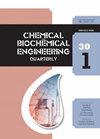Preparation and Characterization of Electrospun PCL/Silk Fibroin Scaffolds
IF 0.9
4区 生物学
Q4 BIOTECHNOLOGY & APPLIED MICROBIOLOGY
引用次数: 1
Abstract
Natural polymer-based scaffolds are generally considered as favourable matrices for the adhesion and growth of cells in tissue repair. One of the most popular materials in this respect is silk fibroin, known for its wide usage in biomedical applications. This work focuses on the development of electrospun scaffolds based on poly(ε-caprolactone) (PCL) and silk fibroin (SF) evaluated regarding the SF effect on their morphology, surface wetting ability, thermal properties, and HaCaT model cell line biocompatibility. The study revealed that the lowest PCL/SF concentration resulted in highest bead-like morphology formation, relatively thick fibers with the presence of random beads in the case of PCL, while uniform and thinner fibers in the case of increasing PCL/SF content scaffolds. The addition of SF reduced the degree of crystallinity in the PCL due to the less organized crystal structure, and decreased its thermal stability. Both SEM and MTT analyses showed cell presence on all scaffolds three days after cell seeding. Although SF improved PCL hydrophilicity, as shown quantitatively by the MTT assay for improved cytocompatibility properties, more structured electrospun PCL/SF scaffold strategies are required.静电纺PCL/丝素蛋白支架的制备与表征
E.Govorčin Bajsić,a E.Zdraveva,b T.Holjevac Grgurić,c I.Slivac,d M.Tominac Trcin,E N.Mrkonjić,一个S.Kuzmić、f T.Dolenec、g I.VrgočZimić、g和b.Mijovićb,*萨格勒布大学化学工程与技术学院,Marulićev trg 19,10000萨格勒布,克罗地亚b萨格勒布本科纺织技术学院,Prilaz baruna Filipovića 28a,10000,克罗地亚c萨格勒布大学冶金学院,Aleja narodnih heroja 3,44000 Sisak,克罗地亚d萨格勒布本科食品技术和生物技术学院,Pierottijeva ul。克罗地亚萨格勒布6,10000 e免疫研究所,Rockefellerova 2,10000萨格勒布,克罗地亚法医科学中心“Ivan Vučetić
本文章由计算机程序翻译,如有差异,请以英文原文为准。
求助全文
约1分钟内获得全文
求助全文
来源期刊
CiteScore
2.70
自引率
6.70%
发文量
23
审稿时长
>12 weeks
期刊介绍:
The journal provides an international forum for presentation of original papers, reviews and discussions on the latest developments in chemical and biochemical engineering. The scope of the journal is wide and no limitation except relevance to chemical and biochemical engineering is required.
The criteria for the acceptance of papers are originality, quality of work and clarity of style. All papers are subject to reviewing by at least two international experts (blind peer review).
The language of the journal is English. Final versions of the manuscripts are subject to metric (SI units and IUPAC recommendations) and English language reviewing.
Editor and Editorial board make the final decision about acceptance of a manuscript.
Page charges are excluded.

 求助内容:
求助内容: 应助结果提醒方式:
应助结果提醒方式:


